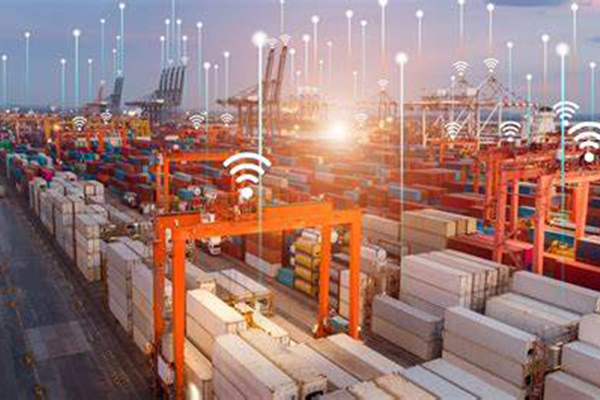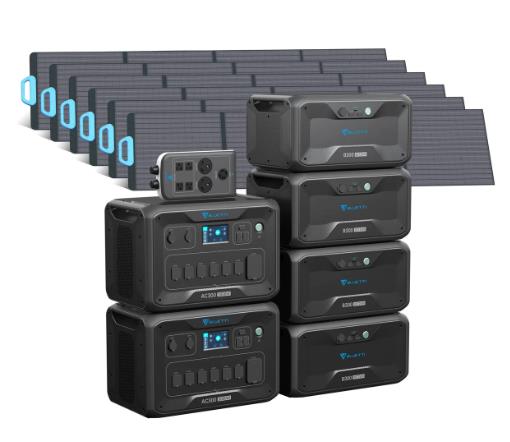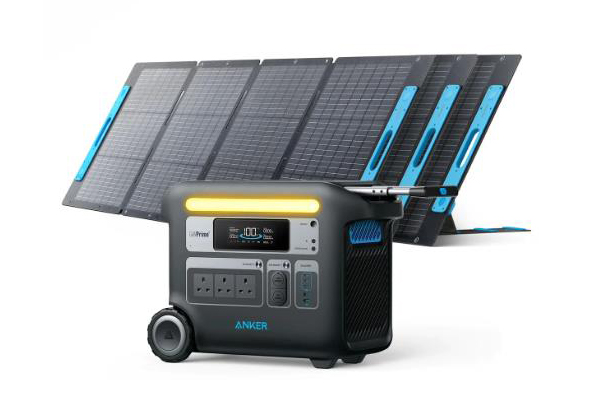Three unmanned transport vehicles have recently been used at the Huashan Port in Wuhan, and the “Integrated Solution for Intelligent Horizontal Transportation in Traditional Ports” has been officially released. This marks the first traditional port container intelligent horizontal transportation solution based on 5G communication in China, indicating that the intelligent upgrade of traditional port transportation is expected to be completely resolved. Now let’s explore how lidar technology helps intelligent port transport vehicles achieve high-precision positioning.
According to reports, the newly deployed 5G intelligent unmanned container transport trucks utilize advanced technologies such as GPS, Beidou satellite positioning, and lidar map positioning to achieve high-precision parking positioning within 5 centimeters.
Traditional unmanned container transport trucks mainly rely on “magnetic nails” buried in the ground for automatic movement. However, the positioning system of these unmanned transport trucks consists of GPS, Beidou satellite positioning, lidar map positioning, and natural positioning based on surface texture recognition.
Through data transmission via the 5G network, they can perceive objects within a radius of 200 meters and control parking positioning accuracy within 5 centimeters. During port loading and unloading, no further human intervention is required if the bridge crane operator and the shore crane tallyman issue instructions through a 5G mobile terminal device.
On-site, the 5G unmanned container transport vehicles can reach high speeds of up to 25 kilometers per hour. Once pedestrians or other vehicles appear ahead, they will automatically stop or reduce speed to follow, even maintaining a distance of 3 meters while driving in a queue.
High-precision positioning sensor for intelligent port transport vehicles
In order to achieve high-precision positioning for intelligent port transport vehicles, two lidar sensors are recommended:
1)The solid-state array lidar ranging sensor – CE30-A, which uses the time-of-flight (TOF) method to measure distance. It emits modulated near-infrared light, reflected when it encounters an object and receives it by CE30-A.
CE30-A calculates the phase and time differences between the emission and reception of the light to determine the distance of the captured object.
Here are the features and specifications of the CE30-A solid-state array laser radar distance sensing sensor:
Features:
- Pure solid-state radar
- Array detection
- Wide horizontal detection field of over 120°
- Vertical detection field of 9°
- Avoidance mode for setting interested detection areas
- Radar internally calculates the nearest point and outputs single-point values via CANBUS/TCP
Specifications:
- Measurement method: Time of Flight (TOF)
- Peak wavelength: 850nm
- Field of view (FOV): 132° (horizontal) * 9° (vertical)
- Pixel resolution: 320 * 24
- Frame rate: 20fps
- Response time: 200ms
- Ranging resolution: 1cm
- Detecting range:
- 10% reflectivity: 0.1~1.5m
- 90% reflectivity: 0.1~4m
- Non-ambiguity range: 0~12m
- Data interface: CAN
- Ranging repeatability (1σ): ≤3cm
- Enclosure rating: IP65
- Dimensions: 79 * 47 * 50mm
2)The ultrasonic lidar sensor – TF02, developed based on the extensive application experience of TF01, is a new generation of single-point ranging lidar sensor based on the time-of-flight (TOF) principle, featuring higher performance.
TF02 mid-range lidar sensor features:
- High range (up to 22 meters)
- High resistance to ambient light (works under 100Klux)
- IP65 protection
- Corrosion-resistant casing
Applications:
- Intelligent transportation
- Intelligent parking lots
- Material level monitoring
- Unmanned aerial vehicles (drones)
TF02 lidar sensor parameters include the following:
- Measurement range: 0.4-22m @ 90% reflectivity; 0.4-10m @ 10% reflectivity
- Accuracy: ±5cm (0.4-5m), ±2% (5-22m)
- Distance resolution: 1cm
- Frame rate: 100Hz
- Environmental light resistance: 100Klux
- Operating temperature: -10~60°C
- Protection level: IP65
- Optical parameters: LED light source, 850nm center wavelength, 3° field of view, exempt level for human eye safety (EN62471)
- Electrical parameters: LVTTL (3.3V) communication level, UART or CAN communication interface
- Other: Size: 69mm x 46mm x 26mm (length x width x height), Weight: 60g (including cable)
- The container unmanned vehicle utilizes 12 ultrasonic radar sensors, transmitting real-time data to the Vehicle Management System (VMS) for precise positioning. The accuracy is controlled within ±5cm.
Among them, the ultrasonic sensors use the TOF principle for obstacle avoidance, which is a simple, technically mature, and low-cost solution. Its bus communication method is convenient for vehicle wiring and can respond to and execute broadcast instructions. Users can modify parameters in real-time to adjust the sensor’s detection range.
The MaxBotix obstacle avoidance ultrasonic sensor – MB1043 MB1033, is a high-resolution (1mm), high-precision, and low-power ultrasonic sensor. It handles interference noise in its design and can resist noise interference. It also compensates for sensitivity for different-sized targets and varying power supply voltages. Additionally, it has standard internal temperature compensation, ensuring more accurate distance measurement data.
Furthermore, the system allows for manual takeover, enabling remote driving. It is reported that unmanned transport vehicles use pure electric or hybrid power with Euro V emissions, which is more energy-efficient and reduces emissions. It also solves the problem of high technical requirements and difficulty in recruiting drivers.
Conclusion:
With the integration of lidar technology, advanced positioning systems, and 5G communication, intelligent port transport vehicles have achieved high-precision positioning, autonomous operation, obstacle avoidance, and remote control. This breakthrough brings improved efficiency, cost savings, and environmental benefits to traditional port transportation.





